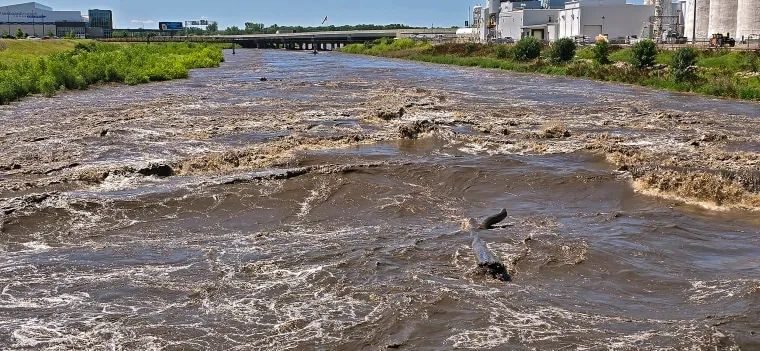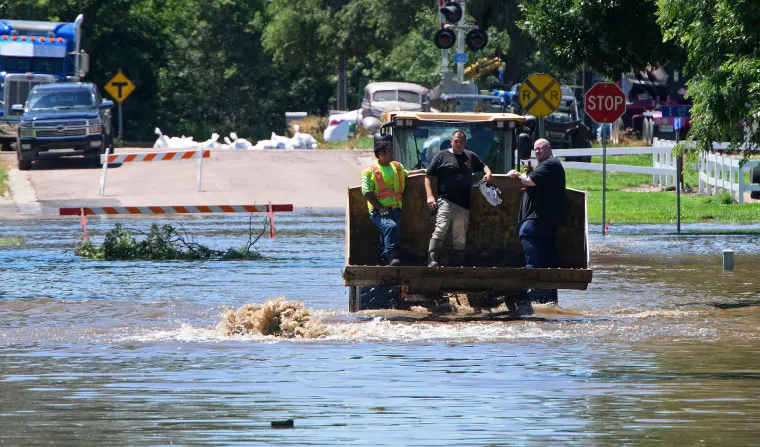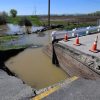Sirens blared in the early hours of Saturday morning in Rock Valley, Iowa, where hundreds of homes were forced to evacuate due to flooding caused by weeks of relentless rain. The Rock River, swollen from the heavy rainfall, was unable to absorb any more water, and the city’s wells were rendered unusable, leaving residents without running water.
“It’s like nothing I’ve ever seen before,” said Rock Valley Mayor Kevin Van Otterloo. “We’ve had so much rain here, and our ground just can’t take any more.”
The city, with a population of 4,200, was one of 21 counties in northern Iowa declared a disaster area by Governor Kim Reynolds. In a dramatic display, drone video footage showed no streets visible, only rooftops and treetops poking above the water. The Emergency Management Director, Heather Van Valkenburg, reported that rescuers were using boats to reach stranded residents, while a state helicopter was initially dispatched to assist, but was later called off when boat rescues became possible.
As the rain continued to pour down in South Dakota, Governor Kristi Noem declared an emergency in the state, with the town of Canton, 30 miles south-east of Sioux Falls, receiving an astonishing 18 inches of rain. Several highways were closed, including a critical stretch of Interstate 29 south of Sioux Falls, which later reopened. Sioux Falls, the state’s largest city, had accumulated over 7 inches of rain in just three days.
The severe flooding, expected to peak on Monday and Tuesday, has left many residents without access to basic necessities. Meanwhile, the heat and humidity continued to grip much of the country, with the National Weather Service issuing heat warnings and advisories for millions across the US, particularly in the Midwest and East Coast.

The heatwave has been attributed to the global climate crisis, which is primarily caused by the burning of fossil fuels. Last year, the US experienced the most heatwaves since 1936, according to experts. Excessive heat contributed to over 2,300 deaths, the highest in 45 years of records, according to a Centers for Disease Control and Prevention analysis.
As the heatwave shows no signs of abating, residents are struggling to cope with the extreme temperatures. In New York state, heat-related hospital visits rose 500% higher than on an average June day, according to the health department.
In California, temperatures are expected to soar to as high as 106F, prompting the National Weather Service to issue a heat advisory through 8pm. Meanwhile, in Iowa, floodwaters are expected to continue to rise, prompting officials to urge residents to remain vigilant.
Despite the challenges posed by the flooding and heatwave, authorities are working tirelessly to provide assistance to those affected. In New Mexico, officials ordered evacuations due to heavy rain and flash flood warnings, setting up shelters for displaced residents. In the mountain village of Ruidoso, residents will be allowed to return on Monday, though they are advised to bring a week’s worth of food and water with them.
As the situation continues to unfold, authorities are searching for the individuals responsible for starting the devastating wildfires, which killed two people and destroyed or damaged over 1,400 structures. The FBI is offering up to $10,000 for information leading to arrests or convictions in the blazes.

